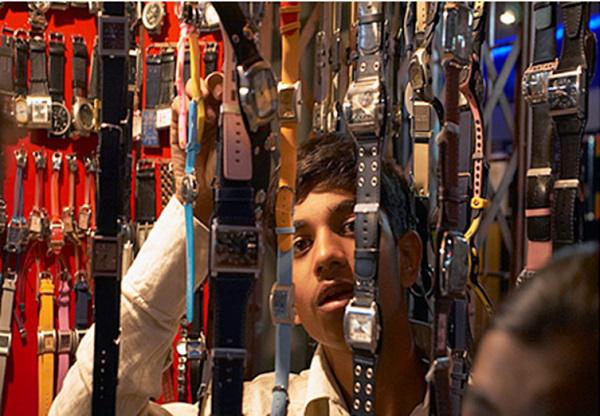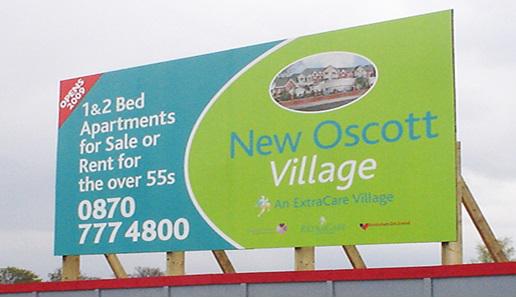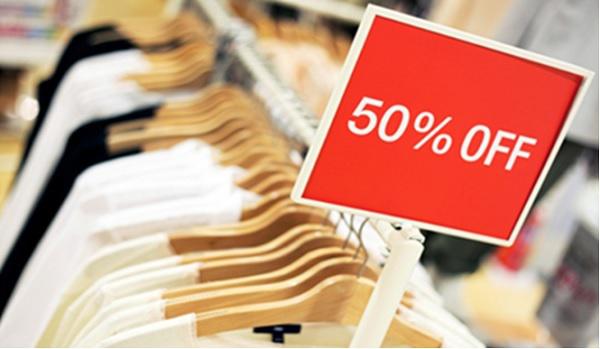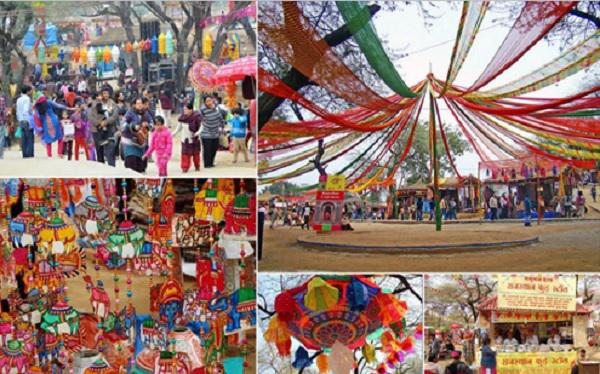Rural Marketing - Promotion Strategies
Let us now understand the different promotion strategies involved in rural marketing.
Personal Selling
It is a process of face to face interaction between the salesperson and the prospective customer. Through a proper training and guide, a salesman can be a valuable medium between the marketer and the prospective customer.
A good salesperson is the one who has thorough knowledge about the product he is about to sell and tries to strike a common point of link between the product and the customer needs.
Personal Selling in Rural Region
Most of the marketers think personal selling is not feasible in rural areas because of various reasons ranging from scattered population to a large number of villages to be covered.
Though still not a prevalent practice adopted by the national level marketers, personal selling is widely done by the local manufacturers of utensils, garments, edible good etc.

For the marketer to adopt personal selling as a tool of promotion in rural area, following are few of the basic requirements that need to be present in their salesperson −
Familiarity with the Rural Area − It is difficult for the salesperson to be familiar with rural area. As the population of rural region is scattered, it becomes a lot more important for the salesperson to have sufficient knowledge about rural area which he is supposed to cover.
Proficiency in Local Language − Fluency in the local language is another key skill that must be present in the salesperson. It acts as a major communication point in converting prospective customer into an actual one.
Acquaintance with the Rural Folks − It is a common tendency among rural people that they only pay attention to those people whom they can consider as a part of their social group. Thus, if the salesperson belongs to the particular rural district, in that case his job not only becomes easy but also chances of success in achieving his sales target increase strongly.
Be Persuasive but not Pushy − A good salesperson is one who is persuasive but not pushy in nature. Rural people are always skeptical in nature about the new product and strongly hesitate to purchase it due to lack of faith.
Here a salesperson needs to remove the doubts of the prospective customer and make him believe to purchase the product. But being too pushy in his approach can ruin the chances of sale of the product.
Public Relations − Public relations in case of marketing promotions in case of rural areas are highly important so as to create the formal relationship with the newly acquired customers. Also, dissemination of information concerning the rural folk is possible only through effective public relations.
Educating rural people about the importance of administering polio drops to children, vaccination to mother and child, sanitation, hygiene etc. has become possible only through the publicity health campaigns.
Sales Promotion
It is a short term tool adopted by the marketer to increase the sales of the particular product / service in a particular area for a particular period of time.
According to marketers, sales promotion includes those sales activities that supplement both personal selling and advertising, and coordinating. It also involves making the advertisements effective, such as displays, shows and exhibitions and demonstrations.
Types of Sales Promotion
The following are the different types of sales promotion −
Push-up Sales Promotion
It is the technique where marketers persuade third parties i.e. intermediaries like dealers, retailers etc. to stock the products of the respective company and push them towards the ultimate customers.
Marketers started providing various incentives, pop material etc. to the intermediaries which encourage them to sell the products to the customers. To increase product sales ratio push-up sales promotion is the important part of promotion efforts taken up by the companies.

In case of rural marketing the companies also follow push-up sales promotion strategies. The commonly followed push-up sales promotion strategies include −
Free display materials − Free display materials like banners, sign boards, neon lights etc. are distributed among dealers to attract and inform the customers about the products.
Storage materials − Storage materials like racks, shelves, refrigerators etc. are distributed among shopkeepers who help in visual merchandising and also aid in storing the product.
Demonstrations − Important technique of push-up sales promotion, free demos at dealers’ shops inform the consumers about the handling of the product.
Incentives to dealers − Under the push-up sales promotion special incentives are provided to dealers on the number of units sold to the ultimate consumers.
Lucky draw contest − It is to motivate dealers to stock the company’s products and promote sales, and lucky draw contest are organized among dealers.
Free gifts − It is a common strategy adopted by the companies and free gifts are often distributed among dealers during festive seasons to increase the consumer base.
Pull-up sales promotion − As the name suggests, pull-up sales promotion is the tool where marketer pulls the customers towards their product through various promotional strategies and advertising.

Customers come through schemes like Buy 1-Get 1 Free, discounts, exchange offers etc. These schemes attract customers towards the product and the customers end up purchasing the products. In context of rural marketing, the following pull-up sales promotional strategies can work well −
Free Distribution of Samples
Distributing free samples among rural people not only popularize the product but also gain huge acceptance among them. When the company decides to enter into new market and launch the new product, in such cases free distribution of samples is an effective pull-up sales promotional activity.
As compared to urban consumers, the tendency to try the new product is low in case of rural consumers because they have lack of faith about the new products. Free samples encourage trial purchase among consumers.
With-pack Premiums
Here, a free product is given either inside the pack or outside the pack. This attracts the rural customers to purchase the product. This is successful only when the free product is either complementary or useful to the consumers. For example, a free toothbrush that comes complementary with toothpaste.
Price-off Premiums
This refers to the cut-price technique for a product. This is useful not only in case of FMCGs but also in case of consumer durables if the discount is appropriate.

Money Refund Premiums
It refers to the price of the product, which is partially refunded to the consumers on the repurchase of same product by showing of proof of previous purchase like cash memo, empty wrapper, poly packs etc.
Exchange Premiums
It is quite similar to the above strategy, under which instead of refund of money a new product is given to consumers on showing of proof of previous purchase.
Interactive Games
Innovative fun-filled games generate interest among the rural crowd. The winner of the game can be rewarded with the product of the company which sponsored such games. Sometimes such games ensure high customer involvement and also increase the interaction between the marketer and target customers.
Fairs and Exhibitions
Fairs are a part of rural people’s life. For the rural people, they are the source of entertainment and a good opportunity to launch their products for the marketers in the rural market. It has mass appeal as several villagers come to fairs.
Customers may be attracted by using the mass media like organizing folk songs competition, folk dances, magic shows, puppetry shows, street theatre, acrobatic skills, juggler, etc.

Another important thing is the use of vibrant colors in the company’s stalls. This pulls the crowd towards buying the product.
Village Haats
Haats are the weekly markets from where rural people buy the items of daily necessities, garments, farm inputs etc. They are the source for rural people and a place of social gettogether. The existence of haats can be traced back to ancient times — the times of Chandragupta Maurya.
Haats provide to the marketers an opportunity to display their products. Consumers are ready to try the product by overcoming all inhibitions and can get the touch and feel of the product and this will further generate sales as most of the people come to the haats with an intention to buy.
Melas
Melas are again the essential element of India’s culture and pull masses. In a trade mela, one can find variety of products. Melas are held usually in festive seasons like Dussehra, Diwali, Holi, Eid etc.
During melas, marketers get to interact with a large number of consumers and encourage for trial purchase. These melas help the marketers target large audience.
Mandis
Mandis are the place for agricultural produce and inputs. Mandis can be a good platform for manufacturers of agri-inputs ─ both durables and non-durables. Durable are tractors, pump sets, threshers etc. Non-durable includes seeds, fertilizers etc.
Pricing Strategy
In rural India, financing at zero interest can persuade customers to purchase consumer durables like television, washing machine etc. and increase the sales.
Increasing the term of payment of loan − Banks which grant loans to rural consumers for the purchase of expensive consumer durables can increase the time period for repayment of loan. Because consumers often worry less about the interest rate of a loan and more about whether they can afford the monthly payment or not.
Financing at low interest − This strategy applied by marketers in urban area is also suitable for the rural counterparts. By this consumer’s will buy high priced consumer durables under finance schemes and make the payment usually on monthly basis as ‘EMI’. In this pricing strategy instead of reducing the price of product, companies charge lesser or zero interest.
Positioning of the product − Positioning creates favorable image in consumers’ minds regarding the products and services. Even in case where the prices of products are kept high by the marketers, positioning the product as value for money and relating the high price with the quality of product that can justify the price of the product and also can push-up for sale.
Flow of income and consumption basket pricing − A farmer has a good amount of money after harvesting of crops and also goes for the purchase of consumer durables after harvesting. Pricing is thus, determined not only by the level of income of the target consumers but also by the surplus income that a consumer has.
Psychological pricing — a common pricing strategy − In this pricing strategy, marketers can play the trick with consumer’s psychology by pricing the product for Rs.99 or Rs.199 or Rs.999 and so on. In rural India, this pricing strategy is still being practised as people there are still not much aware about the tricks that works behind this kind of pricing.
This strategy works mainly for two purposes. Firstly, customer may consider the product as affordable for him, if he perceives that it is priced within his budget. For example, a product priced at Rs.999 may fall within budget rather than one which is priced at Rs.1010. Secondly, customers feel delighted if they get back some rupees in return.
LG: Rural Marketing in India
LG Electronics India Private Limited (LG) step forward into the Indian market in 1993. After two failed joint ventures and the subsequent de-licensing of the consumer electronics industry, LG Electronics India Private Ltd. was formed in 1997 at a time when the market was grooming with intense competition and new product activity.
Under such tough conditions LG emerged as the market leader in washing machines, air conditioners and microwave ovens. The company then set its eyes on the untapped rural markets to grow further.







